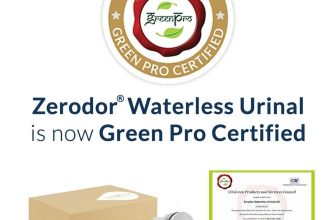Solar Energy – Important & Main Alternative Source of Energy
Solar Energy, as named the energy that we get from the Sun. Nuclear-powered fusion occurring in the sun releases enormous amount of energy in the form of heat and light. Several techniques are available for collecting, adapting and using solar energy.
METHODS OF HARVESTING SOLAR ENERGY
Some of various devices which can be used easily to generate solar energy:
- Solar cells or Photovoltaic cells or PV cells: Solar cells consist of a p-type semiconductor (Silicon doped with Boron) and n-type semiconductor (Silicon doped with Phosphorus) in close contact with each other. When solar rays drop on the top p-type semiconductor, the electrons from the valence band move to the conduction band and cross the p-type junction into the n-type semiconductor. A latent difference is created causing an electric current to drift. These cells are widely used in calculators, electronic watches, street lights, water pumps, radio and television etc.
- Solar battery: When several solar cells are connected in series, it forms a solar battery. These solar batteries produce enough electricity to run water pumps, street lights, etc. They are generally used in remote areas where electricity supply is a problem.
- Solar heat collectors: Solar heat collectors consist of natural materials like stones, bricks, or materials like glass, which absorb heat during the day time and release it slowly in the night. It is generally used in cold places where houses are kept in hot condition using solar heat collectors.
- Solar water Heaters: It consists of an insulated box, in which is painted black on the inside. It is provided with a glass lid to collect and store solar heat. The box installed with a copper coil painted in black through which cold water flows in, gets heated in the copper coil and flows into a storage tank. Finally, water from storage tanks is supplied.
- Solar energy is currently used to power satellites, watches, calculators, etc.
- A few applications of solar energy are: (i) solar water heater
(ii) Solar cooker
(iii) Solar dryer and
(v) Solar refrigerator.
What Are Active and Passive Solar Systems?
Modern solar energy systems harness the heat produced from the sun to power residential/industrial heating and cooling systems through the use of PV or photovoltaic panels. These are also called solar cells; such devices collect and convert solar energy into electrical energy. But how this energy is captured and distributed defines the real difference between the Active and Passive Solar Systems.
1. Active Solar Energy Systems
These systems use external sources of energy to power blowers, pumps and other types of equipment to capture, store, and convert solar energy. After solar energy is captured, it is stored for later used. Dependent on the intricacy of the design, these systems can heat/cool a home or even provide power to an entire building/neighbourhood. Typically, small systems are used to supply electricity for heating/cooling systems in homes and other buildings, and hi-tech large systems can supply power for entire communities.
| Pros | Cons |
| No need to worry about deriving power from sources other than the sun, this is because it utilizes the power of your external devices. It doesn’t release carbon dioxide into the atmosphere.Heating of the PV panels helps keep them clean, even in bad weather conditions.No wind noise is generated from the solar panels. | Demands expensive external equipment.High maintenance cost for the equipment.The fluids which most efficiently store heat can pollute the air by releasing toxic chemicals into the air. |
The features of this system include:
- Solar collectors are made up of flat-plate PV panels, that are normally stationary and mounted. In hi-tech designs, these panels are commonly connected with each other to form modules. These solar collectors are more complex than passive systems in both design and mechanism.
- The solar collectors make use of liquid or air as conductors which store and convert energy. The ones which use liquid are called hydronic collectors, and the ones which contain air are known as air collectors.
- Liquid conductors are more popular than the ones which are air-based, this is because a liquid is normally more efficient at conducting heat.
The advanced design of these collectors makes an active solar system most cost-effective in terms of dipping reliance on traditional energy sources.
2. Passive Solar Energy Systems
A passive solar system does not rely on external devices for operation. Simply put it doesn’t involve any mechanical devices or the use of conventional energy sources beyond what’s needed to regulate its control. Greenhouses, solariums, and sunrooms are classic examples of basic passive solar structures. Typically, the sun’s rays pass through the glass windows, which absorbs and retains the heat. The design and success of such systems depend totally on its orientation and the thermal mass of the structure’s exterior walls.
Investing in a passive solar system is a great idea when you are looking to power a small residence or office building.
| Pros | Cons |
| No external equipment needed, hence cheaper than active systems.It can bring down your energy expenditures by nearly 14 percent. A better option for health – because it doesn’t rely on radiators or furnaces which cause allergies or dry out your mucous membranes. | Its effectiveness depends on the weather.Not suitable for locations having warmer climates, as it can potentially overheat your buildings. Demands a cautious choice in windows for extreme success. |
The features of this system include:
- Typically, passive collectors rely on south-facing windows to capture solar energy.
- The design of the solar collectors in passive solar energy systems is based on the law of thermodynamics, that posits that heat transfers from warm to cool surfaces.
- The easiest method of transferring the heat from passive solar collectors is through convection.








